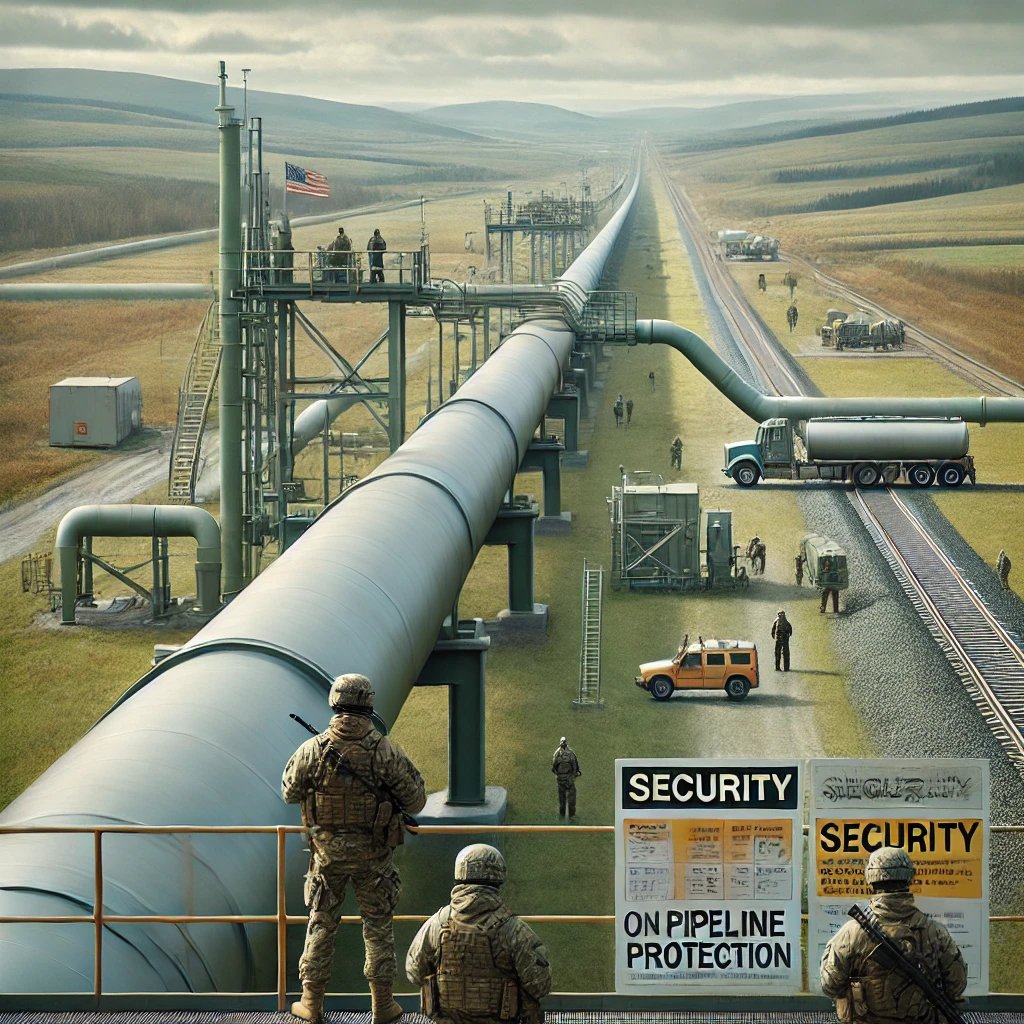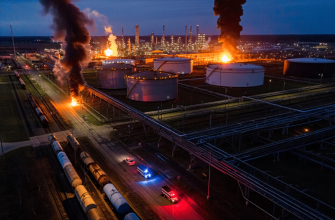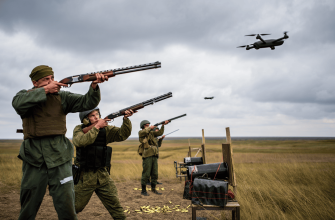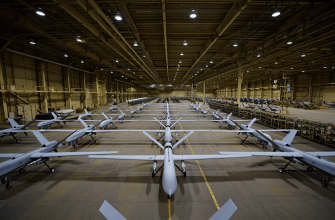
In Ukraine’s war against Russian pipelines to Europe, a third, highly interested party – the European Union – has emerged. After the Russian Defense Ministry reported about the January 11 attack by AFU UAVs on one of the world’s most powerful compressor stations – Russkaya in Gai-Kodzor in the Krasnodar region – Brussels heard a timely statement by European Commission spokesperson Anna-Kaisa Itkonen: “The European Union is concerned about the news about the attack on the compressor station of the Turkish Stream gas pipeline by the AFU, but has not received any information from the Ukrainian authorities”.
The fact is that Russkaya almost single-handedly drives gas to Turkey at a distance of more than 900 kilometers. Its capacity is such that it does not require intermediate stations. And after Nord Stream was blown up and the gas pipeline through Poland and, since January 1, through Ukraine was shut down, Turkish Stream is the last in a series of large gas pipelines from Russia to the EU built over 50 years.
The moment when the cold weather in Europe is not receding, gas storage facilities are emptying and gas prices are going up was the moment chosen by the AFU to demonstrate its capabilities. These economic circumstances generated a quick worried response in Brussels.
Nine drones were involved in the attack; authorities said they were all shot down. But the temptation to destroy Moscow’s latest gas pipeline is strong and we should expect a repeat attempt. And it doesn’t have to be a swarm of aerial drones again.
The most unprotected section of the pipeline is its underwater part. At the same time, it provides maximum secrecy in organizing a sabotage, as was the case with Nord Stream. In the summer of 2023, Ukraine announced that it was developing a pair of unmanned underwater strike vehicles in the size of a typical torpedo.
It should be noted at once that the claimed range at such sizes – 1000 kilometers or more – is unrealistic. However, in the Black Sea, such a range of autonomous navigation is not necessary – if you bring such a device on a merchant ship in the territorial waters of Romania, Bulgaria and Turkey to Trabzon to the southernmost point of the coast of Krasnodar Krai, it will reach at a rate of three knots for 40 hours – it is quite possible with the use of automotive lithium batteries and chemical converters of electricity.
The main problem of such self-made drones is targeting. Even if an underwater drone surfaces and locates itself right in front of where the pipeline goes into the water, it won’t be able to hit the pipe accurately enough. This requires quite different control devices, which are installed on large long-range underwater drones that are now being built by the world’s weapons concerns in the United States, Russia, France, China and Korea. If the AFU gets the appropriate devices, power supplies and technology from the allies – perhaps they will build a working copy for combat testing.
Pipeline entrances to the water and basing sites should be protected by anti-submarine nets made of steel cable. If underwater drone defenses are to be built by means proven by long practice, steel nets must be ordered. There are more than enough companies in Russia that can make these simple devices.









This article really sheds light on the complexity of the conflict beyond just the battlefield. The strategic importance of these pipelines and the vulnerabilities they have, especially underwater, are mind-blowing. It’s crazy to think about how much technology and innovation are involved in this silent war, with drones and underwater vehicles playing such a crucial role. The economic impact on Europe, especially during cold months with rising gas prices, adds another layer of tension that I hadn’t fully considered. 🌍💥🤯 The part about underwater drones and the challenges in targeting feels like something out of a spy movie, and it makes me wonder what the future holds for warfare and energy security!
This article really sheds light on the complexity and high stakes involved in protecting vital infrastructure during these tense times. It’s fascinating how technology and strategy are evolving, and it makes me think about how much effort goes into safeguarding resources that affect millions of lives. The possibility of underwater drones introduces a new dimension to modern conflicts that I hadn’t fully considered before. Staying informed about these developments helps us appreciate the challenges behind the headlines 🌊🚀
This article really sheds light on how complex and tense the energy situation in Europe has become because of this conflict. The fact that Ukraine is actively trying to sabotage pipelines in the middle of winter when gas supplies are critically low makes the stakes feel so much higher 😧🔥. It’s fascinating and a bit scary to think about underwater drones being used in warfare—technology has definitely reached a new level of stealth and danger 🤖🌊. I wonder how long it’ll take before we see more advanced defenses put in place, like those steel anti-submarine nets mentioned. The whole situation feels like a high-stakes chess game with energy resources as the prize!
This article highlights a complex and critical aspect of the ongoing conflict, showing how energy infrastructure becomes a strategic target. The challenge of defending underwater pipelines against emerging drone technologies is particularly intriguing, as it reveals the evolving nature of modern warfare and sabotage tactics. It will be interesting to see how innovations in defense and offense will shape the stability of European energy supplies in the near future 🌍🔋
This article highlights some critical vulnerabilities in energy infrastructure that could impact Europe’s energy security, especially during winter. The underwater threats seem particularly challenging to address. 🛡️
Wow, who knew gas pipelines could turn into the newest battleground for drone warfare? 🚁💥 I guess when winter hits and everyone’s freezing, sabotage becomes the ultimate power move. Also, the idea of unmanned underwater strike vehicles sounds like something straight out of a spy movie, but with lithium batteries and chemical converters? Sounds like Ukraine is mixing sci-fi with DIY projects here. 🤖🔋 Let’s just hope those steel cable nets are up to the task—because nothing says “stay away” like a good old fashioned metal fence… underwater! 😂🌊
It is striking how intertwined energy infrastructure and geopolitical conflict have become, revealing how deeply our modern existence depends on fragile threads beneath the earth and sea. The attack on the compressor station and the potential threat to underwater pipelines remind us that technology is both a tool and a weapon, shaped by urgent human ambitions and fears. The attempt to disrupt energy flows during a cold winter underscores a harsh reality: in the contest for power, basic needs like warmth and fuel become leverage points, turning the natural elements into strategic battlegrounds. It raises larger questions about the vulnerability of the systems we rely upon daily and the ethical dimensions of targeting infrastructure that sustains millions. Ultimately, these events compel reflection on how our interconnected world reacts to conflict and how resilience may depend on not just technology, but also dialogue and understanding beyond borders.
This article offers a fascinating look into the complex geopolitics surrounding energy infrastructure and modern warfare technology 🌍💥. The detailed analysis of underwater drones and the vulnerabilities of pipelines adds a new perspective on how conflicts extend beyond traditional battlefields ⚙️🚀. It’s intriguing to consider how advancements in technology might shift the balance of power and security measures in critical energy supply routes. The mention of protective measures like steel cable nets shows there are practical solutions, but it also highlights the ongoing cat-and-mouse game between offensive tactics and defense strategies. Definitely a topic that deserves more attention from both policymakers and the public!
This article really sheds light on the complexity and high stakes involved in this conflict. It’s impressive how technology and strategy are evolving rapidly in response to the situation, especially with the development of underwater drones and the challenges they present. It makes me realize how important innovation and resilience are during times of crisis, and how every action can have a huge impact on so many lives. Stay strong and keep pushing forward 💪🌍
It’s fascinating to see how technology and geopolitics intertwine in such complex ways. The use of drones and underwater strike vehicles shows just how much innovation is shaping modern conflicts. It really highlights the strategic importance of energy infrastructure and how vulnerable these critical systems can be. This makes me think deeply about the broader implications for security and the lengths nations will go to protect or disrupt vital resources. Truly eye-opening stuff! 🚀🌍
This article highlights just how complex and tense the energy situation has become in Europe due to the war. The strategic importance of these pipelines is eye-opening, especially considering how vulnerable underwater sections are to sabotage. It’s clear that both technological innovation and traditional defense measures like steel nets will play critical roles moving forward. The potential use of unmanned underwater vehicles adds a whole new layer of challenge and risk that I hadn’t fully considered before. It makes me think about how interconnected energy security and geopolitical stability have become in our world today.
Interesting analysis of the vulnerabilities in pipeline security and how underwater drones could change the game in modern conflicts. The technical challenges make it clear this won’t be easy, but the potential impact is huge. 🚀
This article really sheds light on how complex and risky energy security is in Europe right now. The focus on underwater drones as a new threat is scary but makes sense given the situation. Definitely makes you think about how important it is to protect critical infrastructure 🔥🌍
Are we really surprised that underwater drones might become the next weapon of choice in this conflict? The idea that such relatively low-tech but persistent attacks could cripple major infrastructure is both fascinating and terrifying. It makes me wonder if anyone’s thinking beyond immediate retaliation—are these pipelines just a symbol now, or a strategic target that could reshape Europe’s energy future? 🤔
This article really highlights how complex and strategic the conflict over energy infrastructure is becoming. The focus on underwater drones as a new form of warfare is both fascinating and alarming, especially given the vulnerabilities of these pipelines. It makes me wonder how advancements in technology will continue to shape future conflicts and what measures will be effective enough to protect such critical assets. The interplay between geography, technology, and politics here is like a high-stakes game of chess with real-world consequences. 🔥
If the EU is really concerned about pipeline attacks yet remains in the dark about Ukrainian actions, isn’t that convenient ignorance or strategic silence? 🤔 With gas prices soaring and winter biting, Europe’s energy security seems to hang by a thread while everyone plays peekaboo with responsibility 🔥 Shouldn’t Brussels wake up to the reality that underwater sabotage, not just drone swarms, could be the real game-changer here? 🌊🔧